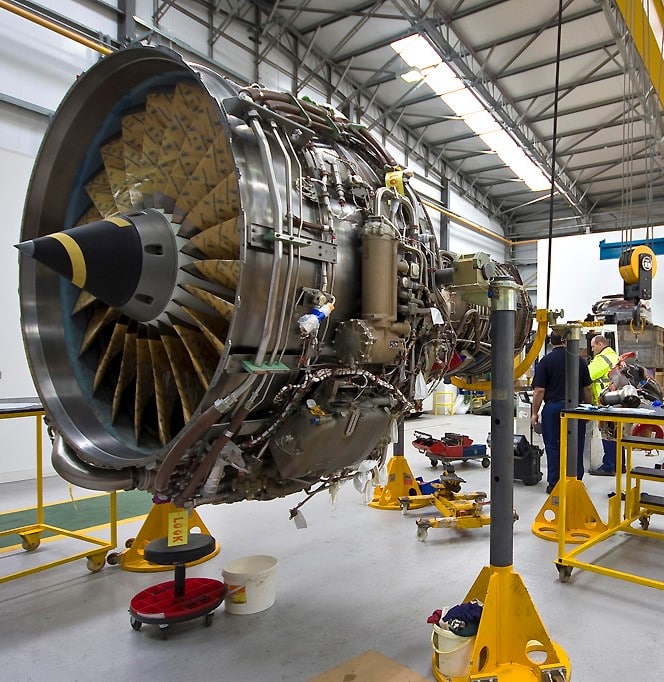Preconstruction, often considered the cornerstone of project success, lays the foundation for the entire construction process.
It’s the phase where ideas take shape, budgets are formulated, and timelines are set in motion.
That’s why we’ve decided to dedicate an entire article to this important step every project planner must take and unveil five essential best practices that can significantly influence the outcome of any construction project.
So, read on to discover how you can supercharge your preconstruction game and take your projects to new heights.
In this article...
Doubling Down on Collaboration
Collaboration and construction generally go hand in hand, but the preconstruction phase is when the ability to consistently and effectively share ideas, concerns, and information is truly non-negotiable.
This is when project goals, deadlines, milestones, and risks need to be clearly defined and communicated with all key stakeholders to ensure everyone is aware of their responsibilities and that all potential problems are nipped in the bud.
Essentially, it all boils down to this: open communication and shared decision-making among designers, vendors, engineers, and contractors are a must for successful project completion.
Lack of efficient communication, on the other hand, can lead to unfavorable outcomes, as highlighted by a Grammarly survey.

These consequences may manifest as unmet expectations, project design delays or flaws, and dissatisfied clients, all of which can significantly tarnish your reputation.
So, how do you step up your collaboration game and ensure seamless project execution from start to finish?
For starters, never skip out on interactive planning meetings.
These meetings serve as a platform where you can establish what needs to be done, by whom, when, and what risks are involved, so do them regularly and make sure everybody can voice their opinion.
Fail to do so and you may face project-halting issues when construction starts.
For example, when site conditions are not properly examined and reported, that can prevent you from devising a contingency strategy in case of, say, soft and unstable ground or similar problems.
Having User-Friendly Collaboration Tools
Another thing that can help you with collaboration are tools like:
- Estimating and takeoff software
- Bid management software
- Project visualization and presentation tools
- Site analysis and mapping solutions
Systems like these can make communication considerably easier for everyone involved by streamlining data sharing and serving as a single source of truth.
Be careful, though, not to get swayed by robust solutions with too many advanced features, and instead take some time to do proper research and find the right system for you.
Look for systems that’ll be easy to use for everyone involved in the project.
Why?
Because overly complex software can counteract its intended purpose, impeding efficiency and diminishing overall productivity. Worse yet, it can cause frustration among the stakeholders and end up not being used at all.
A study by Userlane delves deeper into this topic, revealing some interesting insights.

As it turns out, a vast majority of companies experience serious challenges due to inadequate technology adoption, like poor ROI, increased training expenses as well as higher costs for maintaining old tech.
The survey also considers the employees’ perspective, highlighting that complicated software results in frustration, mistakes, task abandonment, and workflow disruption.
Now, you’re probably wondering how to find the system that’s right for you before you commit to the purchase.
Here, the best approach is to search for software vendors that provide free trials.

That way you get to explore everything a solution has to offer, assess whether it suits your needs, and get feedback from the stakeholders on whether they think they can work with it.
If the software checks all the boxes, you can proceed with the purchase, feeling confident in your investment.
At the end of the day, without these collaborative tools, you risk encountering issues that often stem from miscommunication, such as unplanned downtime and project delays so be sure to dedicate sufficient time to finding the suitable system.
But beyond streamlining collaboration, technology can offer numerous other benefits that take preconstruction to whole new heights.
Let’s talk about them.
Digitalizing Processes
While the construction industry has often leaned towards tradition rather than innovation, the undeniable truth is that the preconstruction phase stands to gain significantly from digitalizing its processes.
From enhancing profitability to improving overall operational efficiency, automation has the potential to be truly transformative at this stage, consequently impacting the success of a project in general.
Let’s focus for a moment on a Deloitte study conducted in 2023, which serves as a compelling testament to the positive impact of digitizing workflows within the construction sector.

Some notable outcomes revealed by the research include reduced costs, heightened productivity, and enhanced job site safety.
However, these benefits primarily pertain to the industry as a whole.
What about the specific advantages of automating preconstruction processes?
For starters, we can’t talk about the perks of digitalizing preconstruction without mentioning improved accuracy.
Takeoff software, for example, automates the estimation of project-related expenses and assesses the quantity of materials needed, eliminating the possibility of human error.
Stewart Carroll, President of Beck Technology, emphasizes that such precision is crucial for timely project completion.
“The quicker we can get to an accurate, valid, transparent estimate for that base case, we then need to spend as much time as humanly possible looking for better solutions to that project.”
The technology efficiently handles these “lower-value” tasks, he says, enabling estimators to concentrate on more important matters and find solutions to potential problems faster.
This leads us to the second benefit of preconstruction technology: improved efficiency.
Building Information Modeling (BIM), for instance, facilitates collaborative planning, designing, and construction within a 3D model, concurrently managing essential documentation like schedules, diagrams, and estimations.
This integrated approach considerably expedites processes, rendering the need for in-person meetings obsolete and allowing teams on opposite sides of the country to make decisions together.
In fact, Keith Kylynych, preconstruction services director at Moss & Associates considers BIM an indispensable tool in the face of the industry’s rapid evolution.

Without it, he claims, you simply can’t stay ahead of the curve.
In summary, the benefits of preconstruction digitalization can be encapsulated in one overarching advantage: better project outcomes.
By eliminating errors and automating tasks, efficiency is maximized, ensuring projects are consistently delivered on schedule and within budgetary constraints.
Understanding the Building Codes
Understanding relevant building codes and securing all necessary permits is another crucial aspect of preconstruction.
Overlooking these critical responsibilities can have far-reaching consequences, impacting not only your project’s schedule and budget but also its regulatory compliance.
Think about it.
The permit acquisition process is inherently time-consuming.
In fact, according to Barn Pros, it typically takes between 6 and 12 months, so failure to research and incorporate this time frame into your project schedule could severely disrupt your timelines and, in turn, cause delays.

Similarly, discovering that certain processes are not in compliance with codes after construction has already commenced can further jeopardize the timely completion of your project.
Not to mention that not staying informed about relevant laws and regulations also exposes you to the risk of non-compliance, resulting in substantial fines and penalties.
So, to prevent these issues, thorough research of building codes is essential.
Remember, not only do these laws get updated constantly, but they also vary from state to state or city to city.
For instance, in earthquake and tsunami-prone regions like Hawaii, special seismic design requirements are integrated into their building codes.

There are also specific regulations implemented to address the risks associated with tsunamis.
Moreover, keep in mind that high-rise building classifications or, say, construction operating hours may also differ depending on your location.
It’s imperative for project planners to be mindful of such details and be aware of the local nuances in the building codes.
To navigate through this complex process, consider hiring planning and permit professionals.
Their expertise and guidance can prove invaluable, ensuring compliance, averting potential legal complications, and facilitating the successful completion of your construction project within established parameters.
After all, that’s what the preconstruction phase is all about.
Developing a Procurement Strategy
In today’s environment, where material prices are highly volatile, strategic procurement in construction is a must.
In fact, an efficient procurement strategy helps you out on three fronts: profitability, quality, and efficiency.
Let’s delve into the impact on profitability first.
By starting your preconstruction planning early, and involving your suppliers in the decision-making process, you can get some extremely valuable insights into the best prices and most cost-effective construction methods.
Besides, negotiating with vendors and contractors can yield more favorable payment terms, discounts, or even additional services.
Did you know that procurement costs constitute a substantial 40-70% of a company’s total spending?

This only goes to show just how important strategic planning and the informed purchasing process are.
Moreover, contrary to the misconception that lowering costs compromises quality, a well-executed procurement strategy actually enhances it.
Collaboration between material managers, designers, and construction teams helps you find the best materials for the job and aids in anticipating and addressing issues like construction material shortages, ensuring the structure’s quality remains uncompromised.
In a similar vein, effective procurement can play a pivotal role in enhancing operational efficiency.
For example, identifying key equipment during the preconstruction phase ensures you have the right machines where you need them and when you need them, mitigating challenges like unplanned downtime due to insufficient equipment quantities.
Another tool that helps in that regard is a good equipment management software – like our GoCodes Asset Tracking. The last thing you want after you procure equipment is to lose them or have them stolen.

GoCodes Asset Tracking prevents that by allowing users to check in and out equipment, assign it to people and projects, send overdue reminders and manage everything from one central location.
All in all, a strong procurement strategy is all about securing top-quality resources without exceeding budget constraints or jeopardizing deadlines.
As such, it’s an important step in the preconstruction phase that simply can’t be skipped.
Conclusion
Thorough planning, meticulous research, utilizing the right digital tools, and possessing the ability to collaborate efficiently—all of these elements constitute a well-rounded preconstruction process.
By adhering to the practices outlined in this text, you can establish a solid foundation for future projects, laying the groundwork for success in terms of cost efficiency, timeline adherence, and overall project quality.
At the end of the day, the preconstruction phase sets the tone for the entire project, enabling you to navigate the many challenges of construction work and deliver the possible results every single time.





